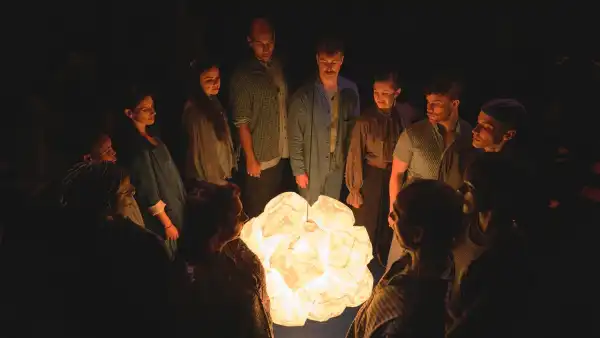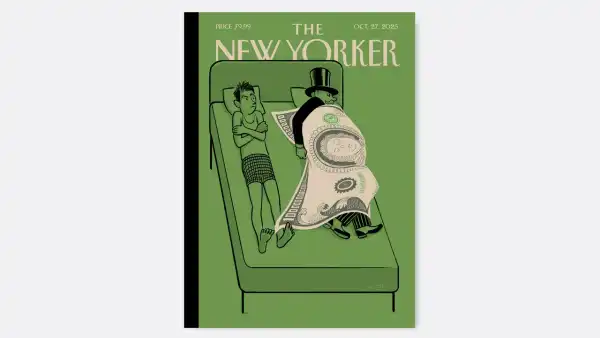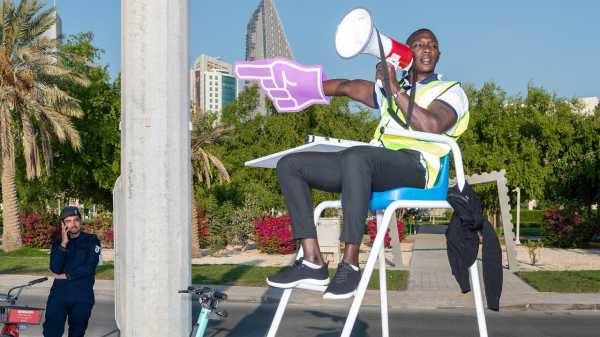
One of the challenges of reporting on the World Cup in Qatar was the question of spectacle. The tournament claims, with some justification, to be the world’s biggest sporting event, with spectators from six continents and an expected TV audience of five billion people. The total prizes for the 2022 edition amounted to four hundred and forty million dollars. Staging the show was also an audacious, geopolitical project by Qatar—an attempt to sew the small, amazingly rich, vulnerable Gulf state into the global imagination. To attend the World Cup was to witness a work of theatre operating on multiple levels. Finding the spaces between the spectacle and something closer to reality was a task that fell to Max Pinckers, a Belgian photographer, who delights in documentary photography and in undermining its conventions at the same time. “I embrace documentary’s blind spots and imagine a world beyond the boundaries of the frame,” Pinckers wrote, in an essay that was published for an exhibition of his work in Doha in 2021. (The show featured “Trophy Camera,” an A.I.-powered camera prototype—designed by Pinckers and Dries Depoorter, another Belgian artist—that was programmed to take only award-winning photographs.) One of Pinckers’s previous assignment for The New Yorker was a trip to North Korea.

Ugandan security guards outside Place Vendôme Mall.
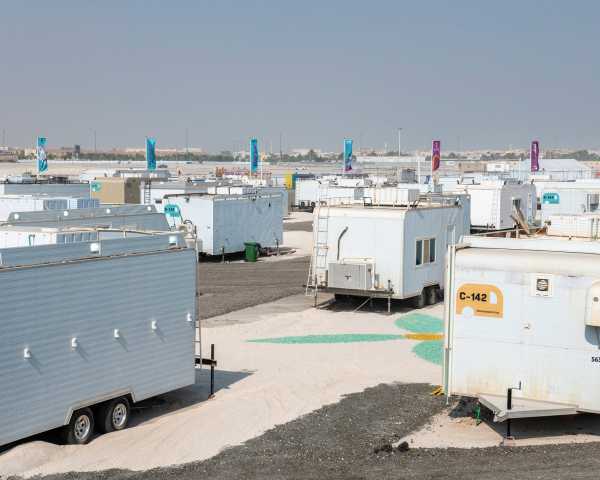
Fan Village Caravan City, a tourist accommodation with air-conditioned trailers.
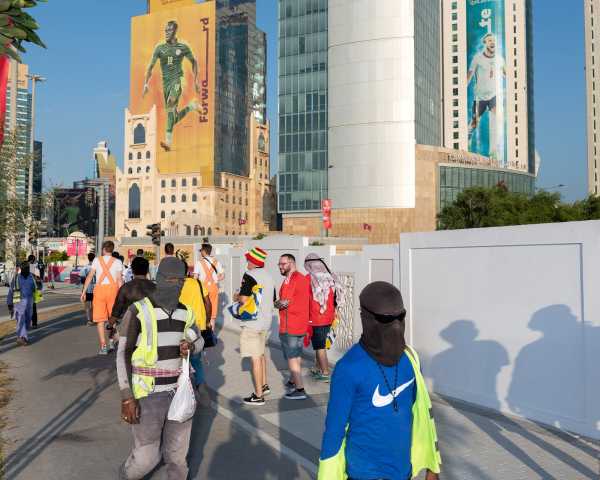
Migrant workers and soccer fans on the streets of Doha.
Pinckers usually works with Victoria Gonzalez-Figueras, his wife and collaborator, and with equipment that allows for a specific lighting style. In Qatar, he had to work alone (or with extremely rare assistance from me), under the consistently bright desert sun. During our days crisscrossing Doha, from team training sessions and matches to quieter explorations of the city, Pinckers searched for moments, or aspects, in which both the artifice of the tournament and its supporting structure were visible. There is no way to exaggerate quite how thoroughly the World Cup took over Qatar. The country is small—a bit smaller than Connecticut, with a population slightly larger than Brooklyn’s. Soccer, FIFA, and Qatar’s branding of the competition were plastered onto every skyscraper, every sliding door, every bus stop, every polite crowd marshal we encountered, from the moment we stepped off the plane. The World Cup was omnipresent and, in some senses, seemed larger than Qatar itself. A good deal of the infrastructure built for the event, including stadiums and trailer parks for visiting fans, will be dismantled or repurposed as soon as it is over.
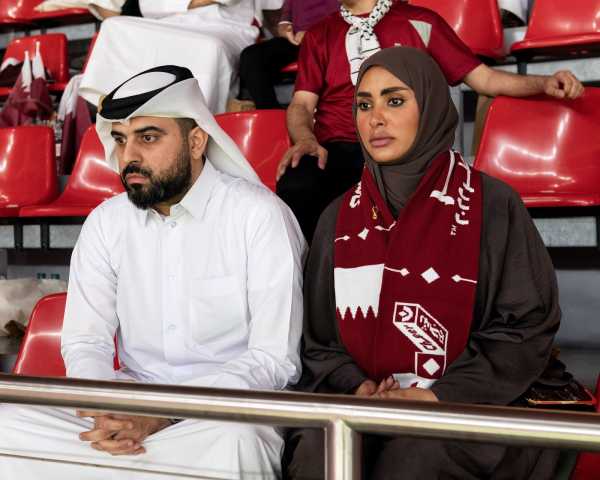
Spectators at the World Cup’s opening match, between Qatar and Ecuador, in Al Bayt Stadium.
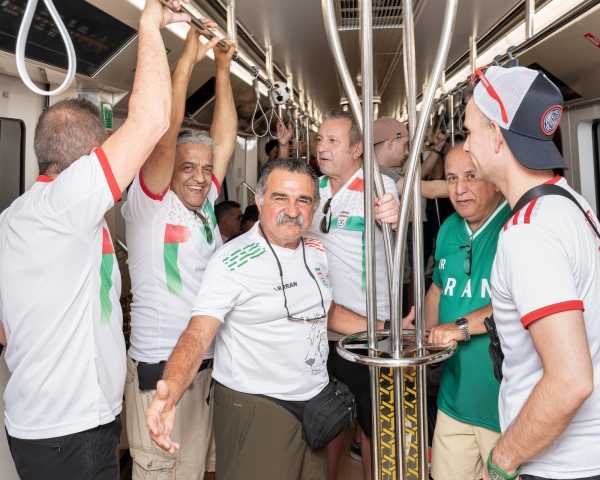
Iran fans on the metro, heading to their team’s game against England.
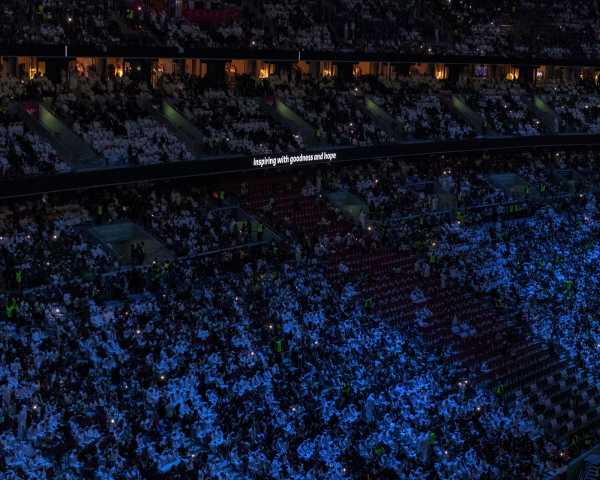
Words from an address by the Qatari emir scrolling across a screen during the opening ceremony.
People were excited to be on view. Given the many controversies that stalked the preparations for the tournament—including corruption at FIFA, the abuse of laborers working in Qatar, and the country’s homophobic and transphobic legislation—I had no idea what kind of atmosphere to expect. But almost everybody we came across, from celebrating fans to volunteers and security personnel, was keen to be photographed by Pinckers—to join the show and to be witnessed doing so. “If you see the photo series itself as being a kind of metaphor for the World Cup as a show or as a stage, I think all the players play a part in it,” Pinckers said. “For me, it’s really about the combination of the spectacle and the more politicized elements of it.”
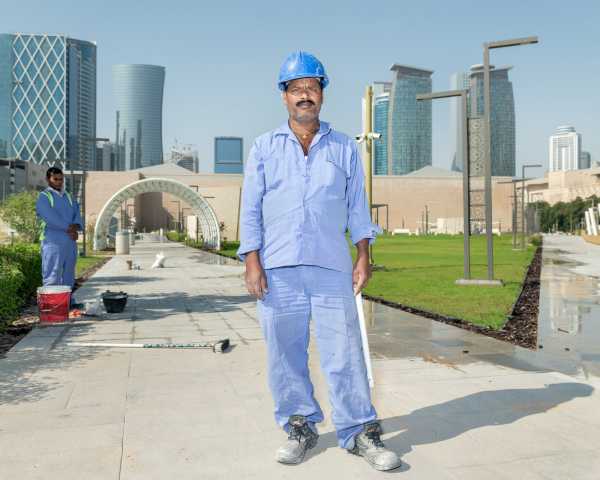
A migrant worker from Nepal at the Doha Exhibition and Convention Center’s park.
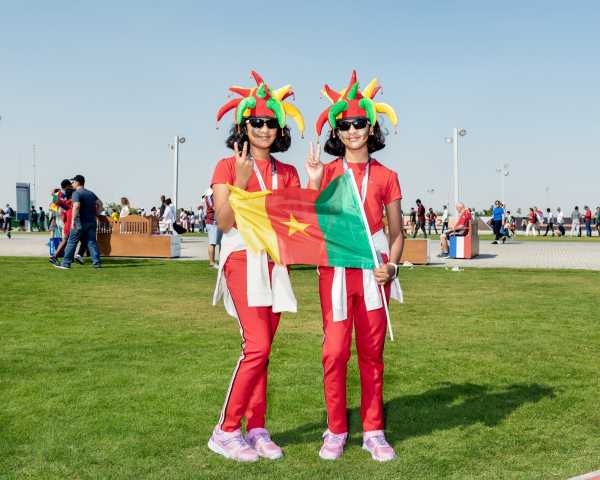
Twins from India dress up in the colors of Cameroon for the African team’s match against Serbia—the one match they could get tickets to.
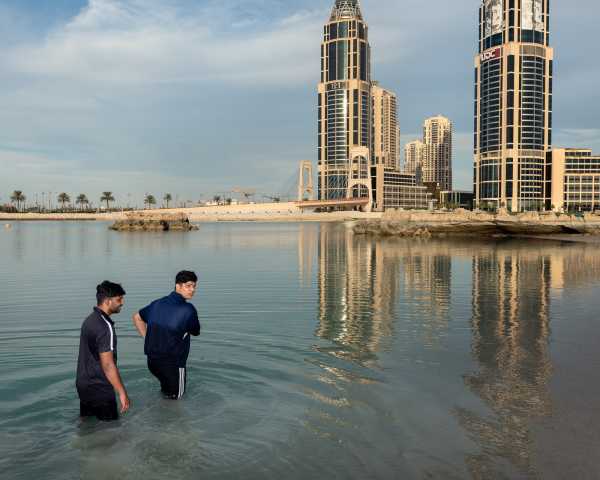
Migrant workers from India wade into the bay opposite a man-made island.
The condition of Qatar’s migrant workers—who make up some ninety per cent of the population and who have, in large part, made the World Cup possible—was a central concern for Pinckers. Although much of the reporting before the tournament sympathized with the workers, there was a risk of portraying them as victims or as people without agency. Pinckers made the decision not to photograph laborers physically at work or without their express permission. All the photographs here were taken after conversations and introductions, and so they allow for glimpses of a nuanced, multivalent experience of life in Doha: a place of opportunity and skill, as well as of vulnerability and control. Workers in balaclavas, shielded from the heat and the gaze of authority, stand proudly in places they have made. A pair of twins, from India, dress up in the colors of Cameroon for the only game that they could get tickets to. A stolen swim in the makings of a futuristic cityscape. Preparing for soccer on a Friday afternoon in the Industrial Area, where male manual workers, overwhelmingly from South Asia, are sequestered by Doha’s planning regulations. The careful—verging on beautiful—construction of a goalpost from desert stones.
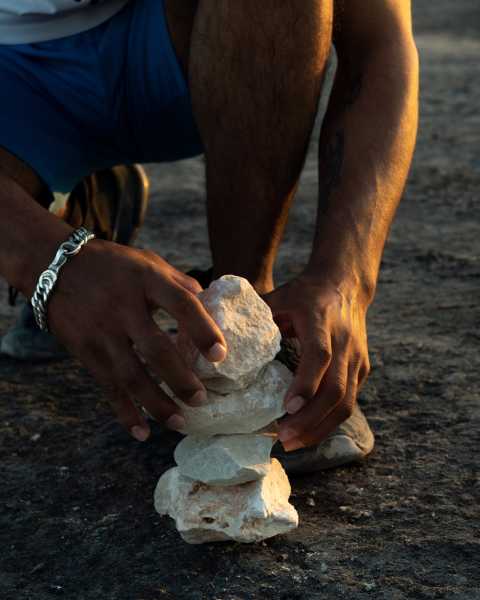
A migrant worker improvises a goalpost from stones for a soccer game with friends.
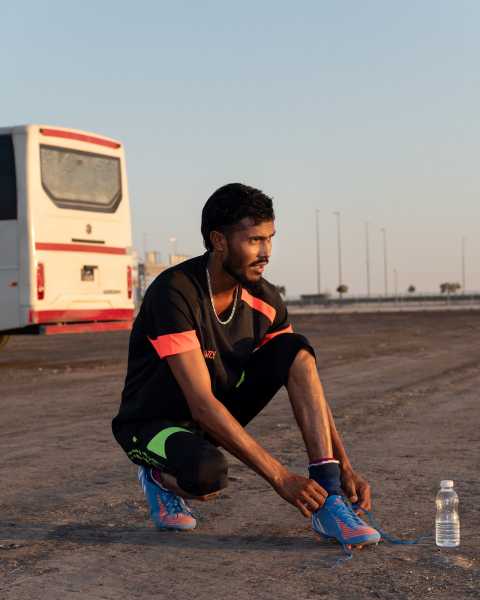
A migrant worker prepares to play soccer with friends during a day off.
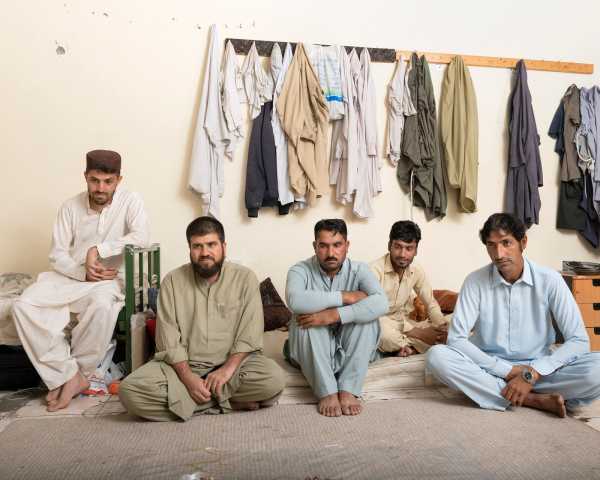
Migrant workers from Peshawar, Pakistan, rooming together in the Industrial Area.
As FIFA and the Qatari authorities correctly calculated, once the World Cup began, it became a sporting event, rather than a political drama. There have been high-quality matches and unexpected results. Soccer took the main stage. One of the endlessly fascinating things about élite sport is how it illuminates the limits of control and of the best-laid plans. There is always surprise, human fallibility, and even, on rare occasion, the presence of the divine. Some of my favorites of Pinckers’s pictures are those which capture—or seem to capture—a glimpse of the uncontrollable. The modest despair of an immaculate Qatari couple at the tournament’s opening match, an unfortunate humbling of the hosts by Ecuador. The sudden appearance of a rainbow, which had become a volatile political symbol, for its association with gay and trans rights, over a lavishly watered field.
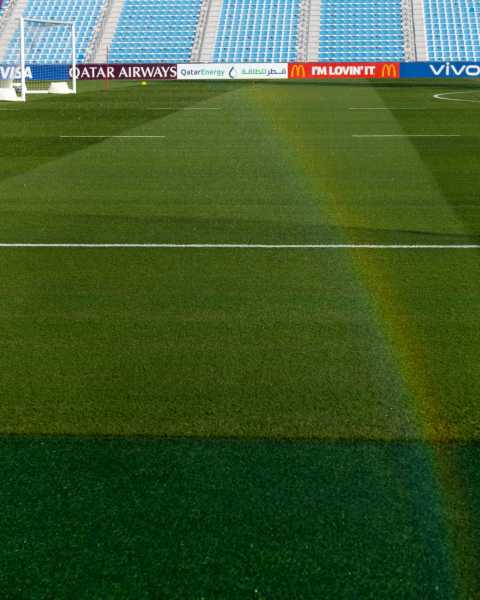
Sourse: newyorker.com
